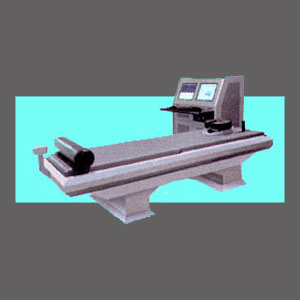
VAX-D for spinal stenosis is more controversial than ever, with much debate over the safety and effectiveness of the system. In fact, it seems that the only availability of VAX-D equipment now is second hand. After an illustrious start, VAX-D has become a seeming treatment of the past in many chiropractic offices. However, the device still has proponents and remains a viable therapeutic option for some patients to this day.
Since the hype over VAX-D has long ended, news reports on the subject are almost non-existent. However, we continue to receive letters from patients citing good results from a full range of spinal decompression systems, including the venerable VAX-D. Therefore, we decided to include the device in our current coverage of the state of the nonsurgical decompression treatment sector for stenosis patients.
This update focuses on what is happening with VAX-D decompression now, many years after its debut as a seeming miracle solution to certain types of back pain. We will focus on clinical applications and patient citations, since these are the most truthful accounts of the treatment in our experience.
What is VAX-D for Spinal Stenosis?
Vertebral axial decompression therapy was the first majorly successful form of modern nonsurgical spinal decompression to achieve saturation in the complementary medical arena. At one time, there were chiropractors literally beating down the doors of the company in an effort to get hold of a decompression table at any expense.
Nonsurgical spinal decompression is now a huge industry, with major players like the DRX9000, AccuSpina, Antalgic Trak and Hill DT systems all competing for accolades. At one time, VAX-D was the original design that led the charge forward for all of these companies to develop their proprietary systems of nonsurgical back and neck pain treatment.
Spinal decompression describes a system of care wherein the patient receives computer-controlled tractioning of the spine in highly targeted areas in order to decompress the spinal discs and create more space between vertebral bones. The system is machine-enacted using the VAX-D table and is completely customizable for treating conditions based on input parameters from the treating doctor.
VAX-D Therapeutic Indications
VAX-D, like all spinal decompression systems, offers the best results for contained herniated discs and degenerative disc disease. It offers less reliable results for facet joint syndrome and general spinal osteoarthritis. The system is not as effective for herniated discs that feature annular tears or fully ruptured spinal discs. Certain spinal conditions can also contraindicate patients from benefiting from the system, including significant atypical curvatures, spondylolisthesis, spinal fusion, spinal implants and other case-specific conditions.
For specifically treating spinal stenosis, the VAX-D system is most indicated for central and foraminal stenotic formations enacted by herniated discs (transient stenosis) and some cases of foraminal stenosis enacted by facet joint osteophytes (permanent neuroforaminal stenosis). There is little evidence that the system will benefit other types of spinal stenosis, including the most common variety created by osteoarthritic accumulation within the central vertebral canal space.
Is VAX-D for Spinal Stenosis Still Available?
The official website for VAX-D went down in mid 2016 and we have yet to receive definitive notice of what is actually happening with the company, VAX-D Medical Technologies. We even contacted them on their social media pages, but still have not received any replies…
Regardless, the tables are still in use in many chiropractic offices worldwide and many are still being purchased second hand by care providers who see a great opportunity to save some money while investing in a potentially effective care practice to help their patients. The prices on the once exorbitantly expensive tables have obviously come down dramatically and reconditioned devices can be found for real bargains for interested chiropractors. Many international care providers are just now gaining access to these high-tech products due to lower cost and availability on the open market. This is great, since it will provide new channels of care for patients with indicated conditions.
We suggest that all patients who are considering any type of nonsurgical spinal decompression, including VAX-D for spinal stenosis care, do their due diligence and go with what their gut tells them to do. Learn everything about the system and then decide, since there is much misinformation for and against nonsurgical decompression therapy. One thing remains sure: VAX-D and other spinal decompression systems offer a hope for patients who might otherwise require surgery. While decompression is not perfect, the outcomes of herniated disc surgery are abysmal and the damage done is obvious and indisputable. Therefore, spinal decompression still earns its place in the grand scheme of treatment options for patients with specific types of stenosis in the central and neuroforaminal canals.
Spinal Stenosis > Spinal Stenosis Treatment > VAX-D for Spinal Stenosis





